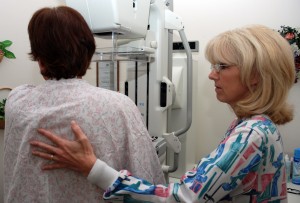It's hard to believe that a one in a hundred risk of something bad happening would generate so much heated debate, but that's where we're at when it comes to the question of mammograms for women in their 40s. Since breast cancer is a disease which risk increases with age, the clear cut off point for mammography has been age 50. Mammography will find cancer in women in their 40s, but will carry a much higher risk of false positives.
Specifically, a 40-year-old woman has a 1.5 percent chance of developing breast cancer at some point during her 40s. The 1-in-8 chance repeated so frequently is over a lifetime -- up to age 80.
While mammography is the best tool we have in detecting breast cancer, it's not a perfect test. Mammograms will pick up abnormalities that are not breast cancer. The problem is that doctors can't say definitively these abnormalities are benign without further testing. Sometimes that means having an additional mammogram, sometimes women must then have a biopsy. In the meantime, many of these women are worrying.
The when-to-start mammography debate has been going on for almost twenty years. More recently, in 2009, the U.S. Preventive Services Task Force re-ignited the debate when it stopped short of making an explicit recommendation that women in their 40's be screened and instead said that the decision was an "individual one."
Today two studies in the Annals of Internal Medicine have some hard data to help individual women make that decision. In a review of 9.5 million mammograms from across the country, researchers say that two groups of women in their 40's are at increased risk of developing breast cancer. These two risks are a close family relative with breast cancer -- a mother, sister or daughter --- and extremely dense breast tissue.
